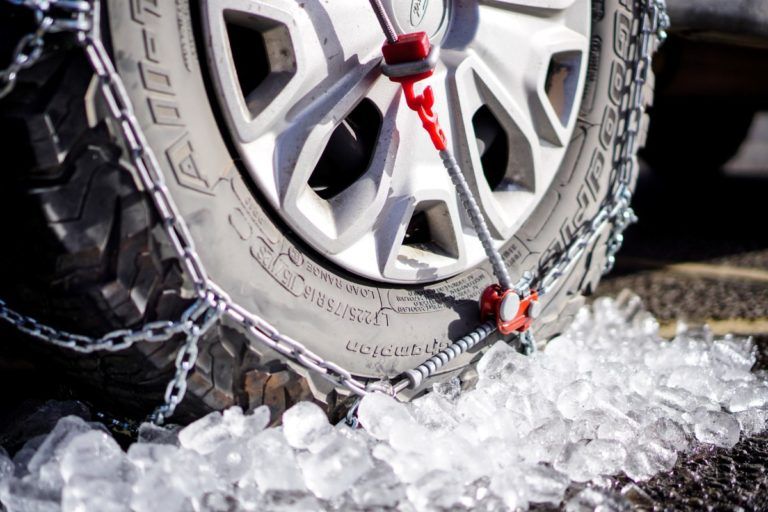With some places in the United States seeing around 125 inches of snow per year, it’s important to be prepared for snowy driving conditions during the winter months. In mountainous or extremely snowy areas, utilizing snow chains is sometimes the only way to keep your car moving.
While winter tires can provide you with traction, they often don’t give you enough to help you in deep snow or slippery situations.
If you’ve never used snow chains before, you might be wondering, “how do snow chains work?” Advanced preparation, practice, and the right equipment will increase your comfort and safety when driving in blizzard weather.
This guide will discuss the basics of tire chains and how you can install them.
Tire chains are a chain system that’s designed to cover the wheel set-up or tire on your vehicle. When installed correctly, they provide you with better vehicle traction in the snow. Snow chains can also give you added traction when driving on frozen surfaces or ice.
There are several different designs of snow chains. One design wraps around the tire and is held together by tensioners. Another design covers the tire’s tread pattern and is mounted to the wheel.
Snow chains can effectively dig into snow and frozen surfaces. The chains can grip the road and allow your wheels to rotate freely. Snow chains also help prevent your vehicle from skidding.
Keep in mind that when you have snow chains installed on your vehicle, you can’t drive at a high speed. Another thing to keep in mind is that you should always put them on your vehicle before you think they’re needed. When the roads start to get covered with snow, it’s always good practice to pull over and put on your chains.
Snow chains aren’t dangerous to put on. The thing you need to be mindful of is the other drivers and road conditions at the time.
After you put the snow chains on, test them before you head back out on the road. You want to ensure that there are no dangling or loose parts. This can result in the snow chains flying off and causing damage.
The ideal place to install snow chains is in a quiet parking lot, but that isn’t always the case. If you need to install them on the side of the road, pull over as far as you can. Put on your hazard lights so other drivers can see you, especially during a dangerous snowstorm.
Before you exit your vehicle, ensure that your parking brake is engaged. You want to prevent any dangerous movement or the car from rolling away.
All you need to install snow chains are the chains themselves. You can also keep a roadside safety kit nearby with emergency reflectors for your protection. One thing you’ll need to check before you install the snow chains is which of your wheels are the driven wheels.
If your car is a front-wheel drive, the chains will go on the front wheels. Install rear-wheel-drive chains on the rear wheels of the vehicle. Four and all-wheel drive cars can utilize four snow chains.
Install rear-wheel-drive chains on the rear wheels of the vehicle. Four and all-wheel drive cars can utilize four snow chains.
Follow the below steps when installing snow chains on your vehicle:
Before you start driving again, ensure that your chains are installed evenly. They should run straight around the tire sides. If they’re misaligned or loose, fix the issue before you start driving.
Next, drive about 100 feet. Check your snow chains again. If everything looks good, you’re ready to head back out onto the road.
If everything looks good, you’re ready to head back out onto the road.
You should purchase snow chains before you head out on a snowy mountain road. There aren’t many places that sell snow chains or carry a full selection. You also can’t purchase snow chains where there is a chain checkpoint.
Most gas stations, big box stores, and tire shops sell snow chains. Look up your tire size in your vehicle’s manual so you get the right size.
As we mentioned before, you’ll only need two snow chains for your vehicle. The only exception is if you have an all- or four-wheel drive car.
Snow tires are designed for better performance and traction on snow and ice. In many scenarios, snow tires are all you need for driving on snowy roads. You often don’t need another traction device, like cables or chains.
Cables wrap around your vehicle’s tires like chains. They help your car grip the road when it’s icy or snowy.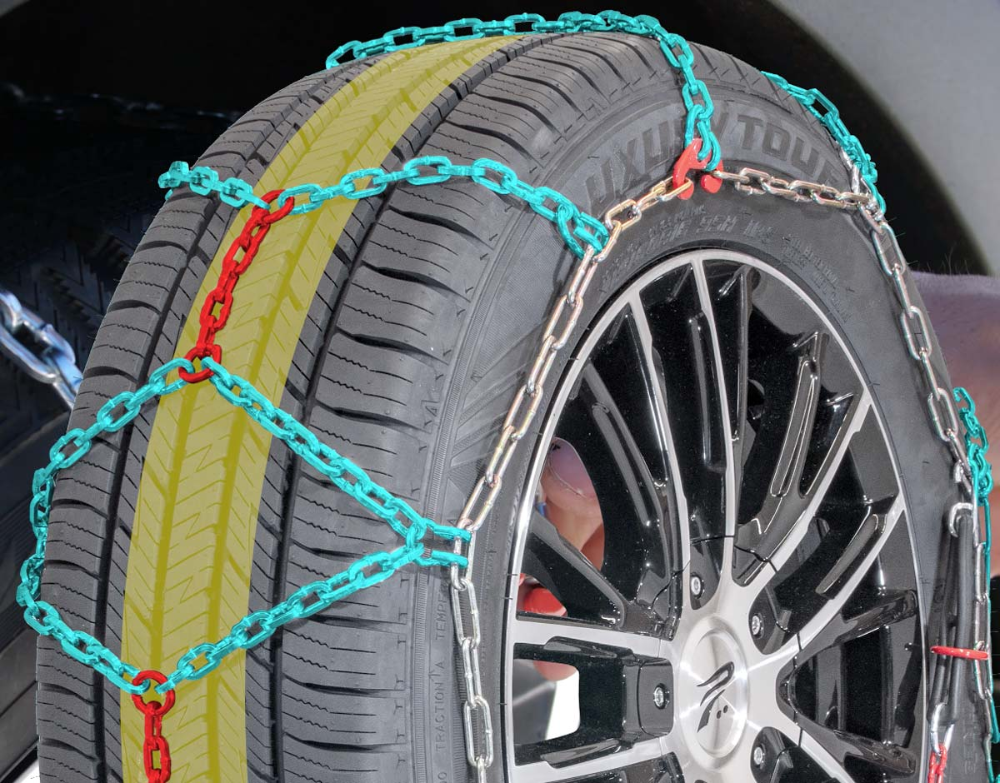
Cables are more lightweight than chains and can be easier to install. However, cables don’t last as long as snow chains. They’re a good option if you don’t require them very often.
The department of transportation where you’re driving will notify you when chains are required. You can check their website for road conditions before you start driving. There will also be a sign on the highway indicating that you need to put your chains on.
Snow chains can damage your tires if they’re not installed improperly. They can also cause some damage if they contact the road.
Make sure that your snow chains are installed correctly. Only use them on roads that have a layer of ice or snow. Once the road is clear, take off the chains.
Now that we’ve answered the question of, “how do snow chains work,” you’re ready to drive safely this winter. Driving with snow chains and moving slowly is key to remaining safe during inclement weather.
If your’e looking for a day to day winter driving solution to help improve your tire traction consider purchasing a set of a winter tires! Simply download the Treads App and we’ll send an installer to your home to swap on your winter tires for you!
By Sanjay Salomon | @SanjaySalomon
If you’re still recovering from the toll last year’s record-breaking snowfalls took on local cars and roadways, we completely understand.
You might have a jarring memory of skidding around in your vehicle when the roads were layered with snow.
If your car doesn’t have all-wheel drive, you’re probably considering taking preventive measures to make sure your vehicle’s tires don’t fail you when it counts.
Tire chains, sometimes referred to as snow chains or snow tire chains, are a common choice. A brief search of “snow tire chains’’ on AutoZone’s website produces options that range from $30 to over $450 in price.
Advertisement:
But if you’re considering wrapping your tires with chains to get better traction in the snow or ice, experts say you probably shouldn’t.
Story continues after gallery
Cold weather driving tips from AAA:
[bdc-gallery id=”1427469″]
John Paul, public affairs director for AAA Northeast, also known as the “Car Doctor’’ here at Boston.com, described the sensation of driving with snow tires as a “bone-jarring’’ experience.
“It’s like driving on a car with square tires,’’ said Paul. “It’s a very uncomfortable ride.’’
To be effective, Paul says, tire chains should only be used on more rural roads with several inches of snow. He says in more urban conditions, they are not needed because plows clear most snow from roadways.
“In my opinion, unless you’re driving in the mountain ranges of the Midwest, tire chains are pretty archaic and have lived beyond their life around here where we do a pretty good job of plowing,’’ he said.
Gene Petersen, tire program manager for Consumer Reports, agrees with this assessment. Petersen, who evaluates and tests tires for the magazine, says snow chain tires come with “a lot of negatives.’’
For starters, they’re a pain to attach to the car. The chains must be laid out in front of the tire and then the car must be driven over them. It can also be difficult to reach under a car’s fender to fasten the chains. And to add to the hassle, drivers have to remove tire chains once they reach a clear path of road.
Advertisement:
“Tire chains are difficult to put on [a vehicle] and are not for the faint-hearted,’’ said Petersen.
Before attaching them, Petersen says consumers should check their owner’s manual to see if tire chains are recommended at all.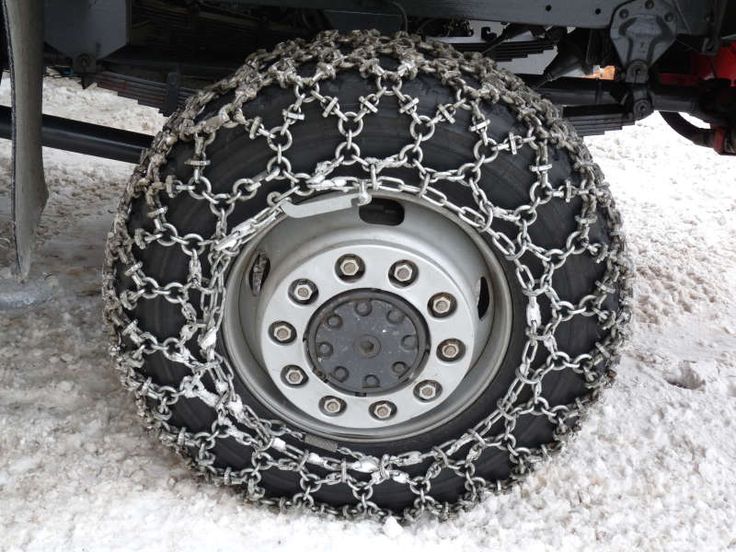 When they are in use, motorists must drive at a very low speed. And drivers should worry if they are causing harm to their vehicle.
When they are in use, motorists must drive at a very low speed. And drivers should worry if they are causing harm to their vehicle.
“If a chain breaks and starts hitting the inside of the wheel well, stop immediately to prevent damage to the vehicle,’’ said Petersen.
Paul points out that there are limits to when tire chains (and winter tires) can be used because they can damage roadways if they are used for too long.
“If you drive on a paved road, chances are you’re going to damage the road and the chains,’’ said Paul.
According to AAA, Massachusetts permits the use of tire chains during “hazardous weather or other related incidents’’ as long as they don’t damage highway surfaces.
A spokesperson for MassDOT pointed out that snow tire chains and other “metal studded tires’’ are not permitted on public roads between May 1 and November 1. Violators could be fined up to $50.
“Studded tires (and tire chains) have the potential to cause wear in the wheel paths that resembles rutting,’’ said MassDOT spokesperson Judi Riley. “If a roadway experienced heavy use of studded tires and tire chains, it’s possible that the extent of the wear could lead to the need for premature rehabilitation.’’
“If a roadway experienced heavy use of studded tires and tire chains, it’s possible that the extent of the wear could lead to the need for premature rehabilitation.’’
Advertisement:
All in all, Petersen says the snow chain tires should not be a motorists “first line of defense’’ especially when better options are easily available.
“People who drive in wintery conditions should really consider buying a set of winter tires,’’ he said. “Put them on all four tires and they all benefit from enhanced grip.’’
Paul also suggests using a snow tire sock, a tire cover that is made of different material to improve a vehicle’s tire grip. But he points out these are mostly helpful to get a vehicle unstuck.
“A sock gives you a temporary solution to get you out of a situation,’’ said Paul.
0003 Of all snow flotation devices, most of our readers and subscribers rely on simple but effective and reliable chains.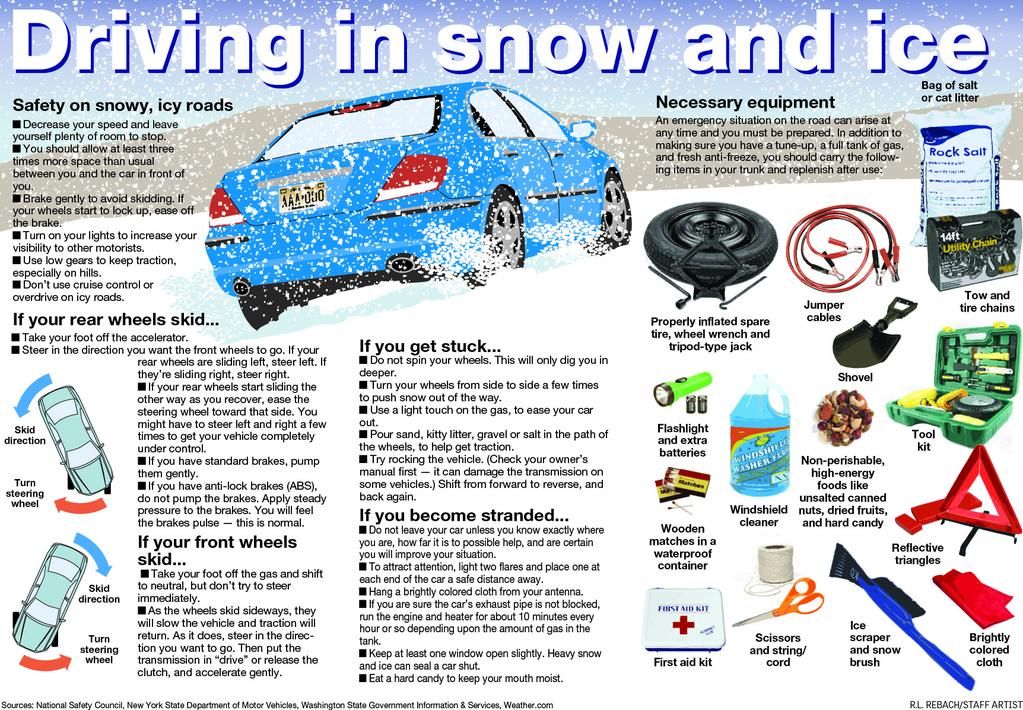
We decided to conduct a comparative test of two circuits. One of them is held on an ordinary lock, and the other is attached using an inertial coil. Let's put chains on the wheels and ride in the snow.
First, install the chain from the first set on the wheel.
We take out the chain from the plastic box in which it was sold and unravel it. The chain is held on a cable with a lock. We open the lock and slip the cable under the wheel. Due to the dense sheath, the cable easily passes along the wheel without clinging to anything. We connect its ends at the top of the wheel with a lock.
Related materials
Spetstest ZR: improving cross-country ability
Then we put the yellow hook on the yellow section of the chain (they should be in the upper part of the wheel) and begin to tighten it and align the cable. The red section of the chain is located below and is responsible for its tension. We tighten it as much as possible and secure it with the help of a red lock. Using special hooks, we fix the free end of the red chain. The first stage of installation is completed.
We tighten it as much as possible and secure it with the help of a red lock. Using special hooks, we fix the free end of the red chain. The first stage of installation is completed.
Now you need to drive a few tens of meters so that the chain is centered. After the trip, she got into place, but sagged. We do not have the largest wheel, but the chain is universal, so its red section almost completely went through the red lock. So, the chain will have to be tightened in a different way.
To do this, we will remove the first yellow link from the yellow hook and thread the hook through the second. Now the red section has a margin, so that the chain can be tightened well. We fix it again with the help of special hooks. It is not necessary to pull strongly, since this section is not power. Installation completed.
We are going to a snowy field to evaluate the effectiveness of the device. On chains, the car feels confident. The wheels barely spin.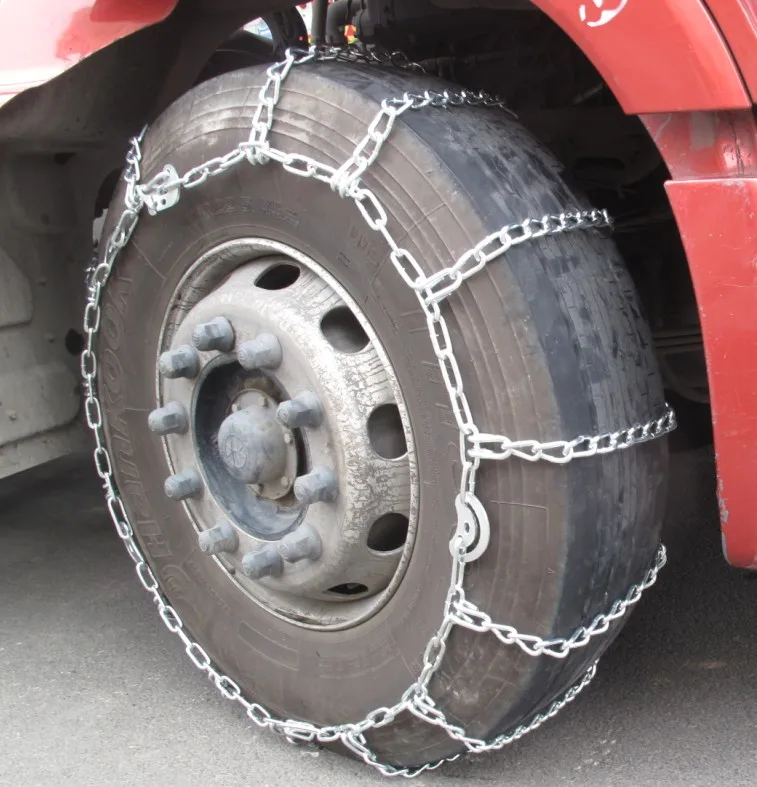 The device is working.
The device is working.
Related content
First snow and first ice - 8 simple tricks for experienced drivers
Install the chain with a different attachment. This set was sold in a slightly more convenient pouch with pockets inside to keep the chains from intertwining. The fundamental difference between this kit and the first one is the automatic tension mechanism. We unfold the chain, making sure that the links are not linked to each other. The marking on the reel must be directed inwards. When we install the device, it will be outside.
We put the cable with the chain under the wheel. It, just like in the first case, easily passes due to the dense shell. Raise the ends of the cable up and connect with a simple lock. We pull the chain out, level it and move it so that the black hook is on top.
Pull the cable out of the spool. We shift the red lock to the right, hook the counterpart and align the chain so that the black section of the chain is located symmetrically with respect to the center of the wheel. We press the red button on the reel, and it starts to retract the cable and at the same time tension the chain. The device is installed.
We press the red button on the reel, and it starts to retract the cable and at the same time tension the chain. The device is installed.
Let's check how effectively the coil will correct the position of the chain in motion. To do this, we will pass several tens of meters. The device works great. It can be seen that the mechanism effectively tightened the chain and it does not sag anywhere. The device copes well with its task: the car confidently overcomes rather difficult sections, including off-road with snow and mud.
The chains from the first and second sets are quite easy to install and work well, really increasing the machine's flotation. At the same time, a chain with an inertial coil is more convenient: after its installation, you can drive immediately, without additional adjustment. The reel tightens the chain as soon as the wheels start to move.

Send all questions and suggestions regarding the Technical Environment series to [email protected].
Other editions of the "Technical Environment" are available in our special project, as well as on our YouTube channel.
In the fields without all-wheel drive? Easily! Testing chains
In the fields without all-wheel drive? Easily! Testing chains
In the fields without all-wheel drive? Easily! Testing chains
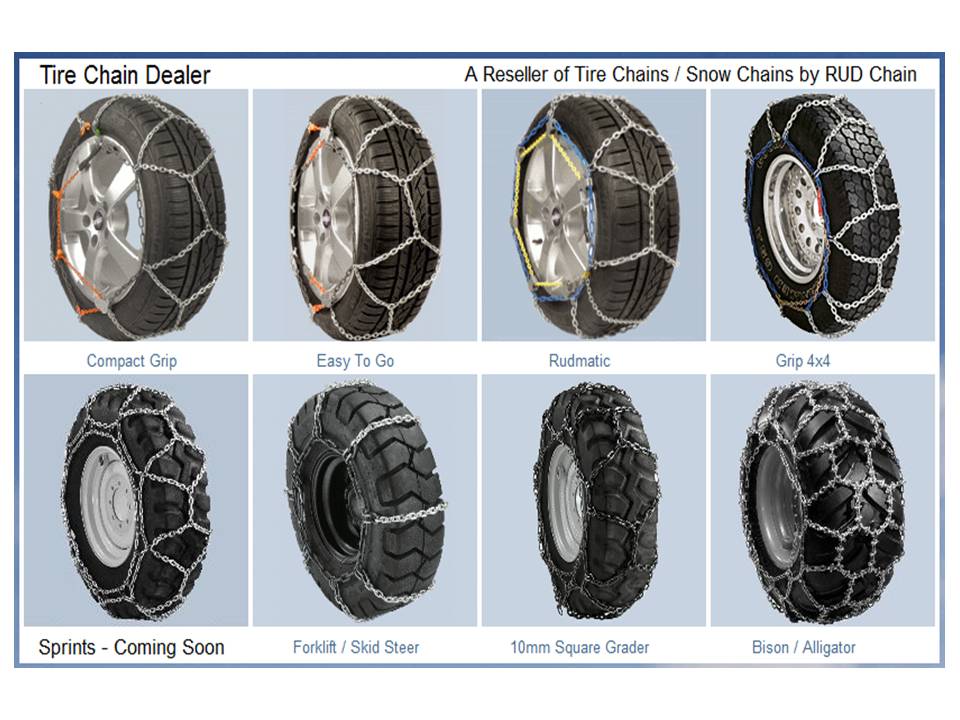 Both greatly improved the patency of the "experimental" crossover, but only one of them is recommended for use.
Both greatly improved the patency of the "experimental" crossover, but only one of them is recommended for use. In the fields without all-wheel drive? Easily! Testing chains
Our new video
When the roadster "Krim" will appear - new details
New Russian sedan at the price of Vesta on the tests "Behind the wheel"
When will the Russian electric truck EVM Pro appear? Details known
Did you like the article? Subscribe and you will always be in the know!
Driving Zen
News smi2.ru
Ivan Shadrichev
Photo: Roman Tarasenko
Expert group: Alexander Krutov | Andrey Selivanov
Behind this dull phrase - "anti-skid chains" - I can only see some bourgeois Courchevel. Around the alpine gingerbread houses are beautiful cars, always with chains on their wheels. Or maybe such devices can fit inam? After all, something, but we have hardly less snow and ice than in the same Alps with all the Pyrenees and the Apennines.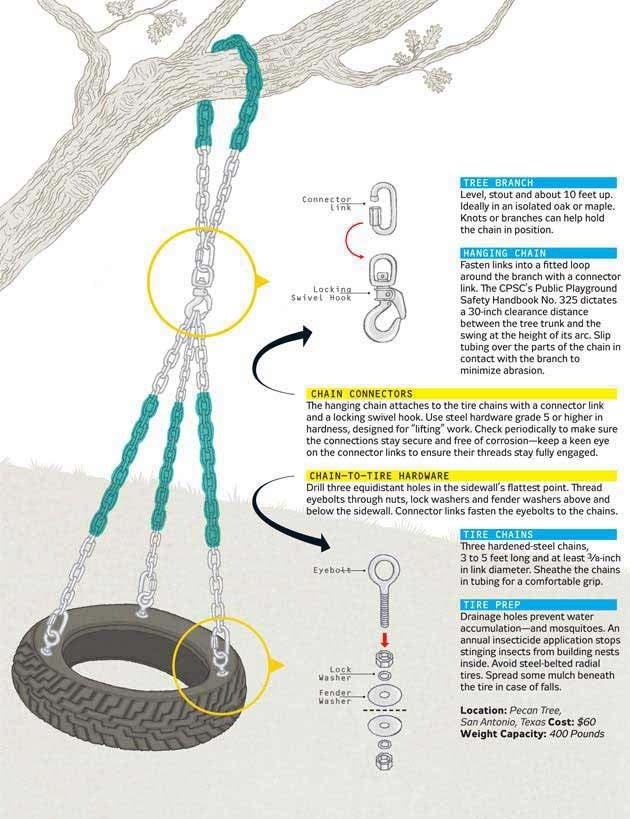 However, in my native expanses, wheels equipped with chains rarely catch my eye - I didn’t even see them on polar winter roads, although there were enough cars, especially trucks, helplessly grinding ice with tires. And in our latitudes, this picture is not uncommon. We should have figured it out.
However, in my native expanses, wheels equipped with chains rarely catch my eye - I didn’t even see them on polar winter roads, although there were enough cars, especially trucks, helplessly grinding ice with tires. And in our latitudes, this picture is not uncommon. We should have figured it out.
The chain, at least in relation to the topic of our conversation, is a removable protector that provides a local increase in pressure on the supporting surface. That is, the principle is the same as in the case of spikes, with the difference that if the spikes in the contact patch with the supporting surface take on only a fraction of the weight of the car, then the chain, being between the wheel and the paved road, does not lift this is a wheel. The contact area becomes tiny, and the pressure, the essence of the weight divided by the contact area, grows many times, forcing the chain to bite deeply into the ice and, even more so, into the packed snow. And if the coating is softer, then the chain is likened to lugs or, if you like, to the blades of paddle steamers. What is called rowing.
What is called rowing.
In my distant youth, I had experience with chains, I pretty much mixed mud and snow while driving a truck. Cross-country ability on chains improved in earnest, and I never got stuck on the road. It is clear that cars should become more passable. It remains to understand how much, and in passing - whether the chains are fraught with great harm.
The first surprise was pleasant. As soon as I dug the World Wide Web shallowly, top-to-bottom, it turned out that a lot of chains are offered for Russians! Of all the variety, I looked at a couple of sets made by eminent companies, then chose three sets of domestic chains, and also a set of plastic belts, which also promise to improve cross-country ability.
As a rule, two chains are included in the kit, and it is prescribed to put them on the drive wheels. And if there are four driving wheels, manufacturers recommend buying two sets per car.
Foreign chains - all entirely with a rectangular section (the manufacturers promise better grip with ice in this form), have devices to facilitate installation, and others even with automatic tension.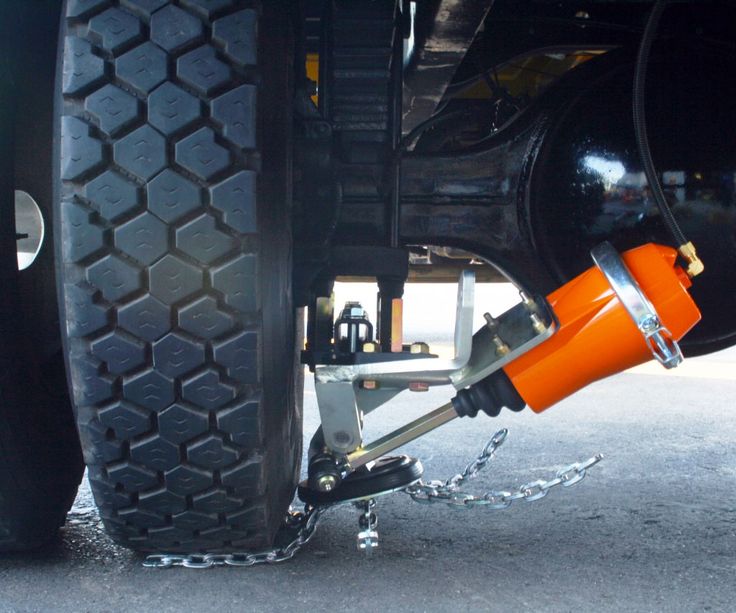 The steel is not only alloyed, but also with surface hardening. It seems that promises of high wear resistance are not advertising chatter. Russian chains, on the other hand, are made of raw round bar, uncoated, and the connecting elements (I wanted to call them rings, it’s too painful for them to have an arbitrary shape) are worked out very sloppily, but they are firmly welded. And our chains turned out to be twice as heavy as imported ones: dragging and deploying them is not a pleasant task. But they are cheap, you can't take that away.
The steel is not only alloyed, but also with surface hardening. It seems that promises of high wear resistance are not advertising chatter. Russian chains, on the other hand, are made of raw round bar, uncoated, and the connecting elements (I wanted to call them rings, it’s too painful for them to have an arbitrary shape) are worked out very sloppily, but they are firmly welded. And our chains turned out to be twice as heavy as imported ones: dragging and deploying them is not a pleasant task. But they are cheap, you can't take that away.
There are exactly two patterns of chains (I almost said “tread patterns”, although I would not have sinned much against the truth) for cars. The first, "ladder" - these are transverse chains with longitudinal ties. And the second type is variations on the theme of rhombuses and honeycombs. The first ones have a reputation for being the best in longitudinal traction, but sinning with insufficient susceptibility to lateral loads, that is, the car can be demolished to the side.